
Anthropology is the scientific study of humanity, concerned with human behavior, human biology, cultures, societies, and linguistics, in both the present and past, including past human species. Social anthropology studies patterns of behavior, while cultural anthropology studies cultural meaning, including norms and values. A portmanteau term sociocultural anthropology is commonly used today. Linguistic anthropology studies how language influences social life. Biological or physical anthropology studies the biological development of humans.

Biological anthropology, also known as physical anthropology, is a scientific discipline concerned with the biological and behavioral aspects of human beings, their extinct hominin ancestors, and related non-human primates, particularly from an evolutionary perspective. This subfield of anthropology systematically studies human beings from a biological perspective.
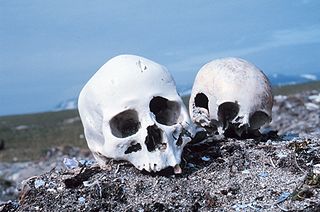
Forensic anthropology is the application of the anatomical science of anthropology and its various subfields, including forensic archaeology and forensic taphonomy, in a legal setting. A forensic anthropologist can assist in the identification of deceased individuals whose remains are decomposed, burned, mutilated or otherwise unrecognizable, as might happen in a plane crash. Forensic anthropologists are also instrumental in the investigation and documentation of genocide and mass graves. Along with forensic pathologists, forensic dentists, and homicide investigators, forensic anthropologists commonly testify in court as expert witnesses. Using physical markers present on a skeleton, a forensic anthropologist can potentially determine a person's age, sex, stature, and race. In addition to identifying physical characteristics of the individual, forensic anthropologists can use skeletal abnormalities to potentially determine cause of death, past trauma such as broken bones or medical procedures, as well as diseases such as bone cancer.
Kenneth Adrian Raine Kennedy was an anthropologist who studied at the University of California, Berkeley. He was Professor Emeritus of Ecology and Evolutionary Biology, Anthropology and Asian Studies in the Division of Biological Sciences at Cornell University. Among his areas of interest have been forensic anthropology and human skeletal biology. He died in Ithaca, New York on April 23, 2014.
The term bioarchaeology has been attributed to British archaeologist Grahame Clark who, in 1972, defined it as the study of animal and human bones from archaeological sites. Redefined in 1977 by Jane Buikstra, bioarchaeology in the United States now refers to the scientific study of human remains from archaeological sites, a discipline known in other countries as osteoarchaeology, osteology or palaeo-osteology. Compared to bioarchaeology, osteoarchaeology is the scientific study that solely focus on the human skeleton. The human skeleton is used to tell us about health, lifestyle, diet, mortality and physique of the past. Furthermore, palaeo-osteology is simple the study of ancient bones.
In anthropology, Sinodonty and Sundadonty are two patterns of features widely found in the dentitions of different populations in East Asia and Southeast Asia. These two patterns were identified by anthropologist Christy G. Turner II as being within the greater "Mongoloid dental complex".

Tim D. White is an American paleoanthropologist and Professor of Integrative Biology at the University of California, Berkeley. He is best known for leading the team which discovered Ardi, the type specimen of Ardipithecus ramidus, a 4.4 million-year-old likely human ancestor. Prior to that discovery, his early career was notable for his work on Lucy as Australopithecus afarensis with discoverer Donald Johanson.
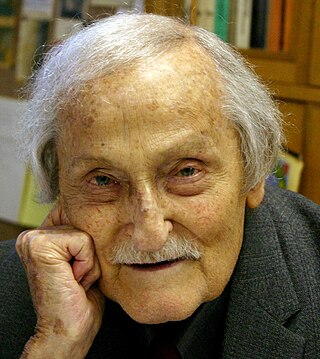
Phillip Vallentine Tobias was a South African palaeoanthropologist and Professor Emeritus at the University of the Witwatersrand in Johannesburg. He was best known for his work at South Africa's hominid fossil sites. He was also an activist for the eradication of apartheid and gave numerous anti-apartheid speeches at protest rallies and also to academic audiences.
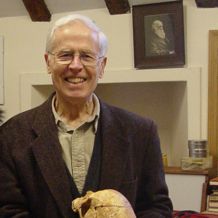
Donald Reginald Brothwell, was a British archaeologist, anthropologist and academic, who specialised in human palaeoecology and environmental archaeology. He had worked at the University of Cambridge, the British Museum, and the Institute of Archaeology of University of London, before ending his career as Professor of Human Palaeoecology at the University of York. He has been described as "one of the pioneers in the field of archaeological science".
Frederick Edward Grine is an American paleoanthropologist. He is a Professor of anthropology and anatomical sciences at the State University of New York at Stony Brook.
Richard Jay Smith, an American anthropologist, is Ralph E. Morrow Distinguished Professor of Physical Anthropology at Washington University in St. Louis. He is now Dean of the Graduate School of Arts & Sciences.

Jean-Jacques Hublin is a French paleoanthropologist. He is a professor at the Max Planck Society, Leiden University and the University of Leipzig and the founder and director of the Department of Human Evolution at the Max Planck Institute for Evolutionary Anthropology in Leipzig, Germany. He is best known for his work on the Pleistocene hominins, and on the Neandertals and early Homo sapiens, in particular.
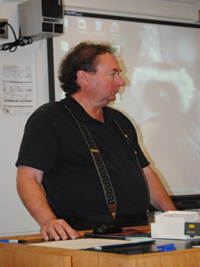
Robert Spencer Corruccini is an American anthropologist, distinguished professor, Smithsonian Institution Research Fellow, Human Biology Council Fellow, and the 1994 Outstanding Scholar at Southern Illinois University-Carbondale. As a medical and dental anthropologist, Corruccini is most noted for his work on the theory of malocclusion and his extensive work in a slave cemetery at Newton Plantation in Barbados.
In Marxist philosophy, the term reification is the process by which human social relations are perceived as character attributes inherent to the people involved in said social relations, and also identifies attributes of some product of social relations, such as a commodity produced for trade. In a society dominated by the production of commodities, the philosophic concept of reification identifies the dialectical relationship between social existence and social consciousness, between objective social relations and the subjective understanding of social relations.

György Lukács was a Hungarian Marxist philosopher, literary historian, literary critic, and aesthetician. He was one of the founders of Western Marxism, an interpretive tradition that departed from the Soviet Marxist ideological orthodoxy. He developed the theory of reification, and contributed to Marxist theory with developments of Karl Marx's theory of class consciousness. He was also a philosopher of Leninism. He ideologically developed and organised Lenin's pragmatic revolutionary practices into the formal philosophy of vanguard-party revolution.

Tanya M. Smith is a human evolutionary biologist, and Professor at the Australian Research Centre for Human Evolution, Griffith University.
B. Holly Smith is an American biological anthropologist. She is currently a research professor in the Center for Advanced Study of Human Paleobiology at The George Washington University. She is also a visiting research professor at the University of Michigan Museum of Anthropological Archaeology. The majority of her work is concentrated in evolutionary biology, paleoanthropology, life history, and dental anthropology.
Lucile Eleanor St. Hoyme was an American biological anthropologist who conducted research related to human variation, bioarcheology, and paleopathology. St. Hoyme served as an Assistant Curator in the Department of Anthropology at the National Museum of Natural History. St. Hoyme analyzed human remains excavated from the John Kerr Reservoir Basin using a new bioarcheological approach combining data from other disciplines. Beyond her work with the Smithsonian collections, St. Hoyme also worked on FBI forensic cases in the 1960s with National Museum of Natural History Anthropology Curator J. Lawrence Angel.
Edward Eyre Hunt Jr. was an American physical anthropologist and human biologist. He did bachelor's, master's and a Ph.D. from the Harvard University in 1942, 1949 and 1951, respectively. He worked at several academic institutions including the Harvard University, City University of New York, Yale University and Pennsylvania State University until his retirement in 1985.
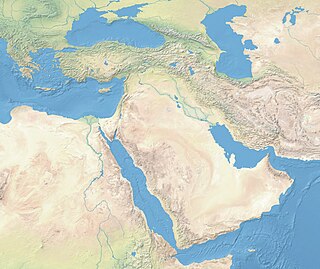
Near Eastern bioarchaeology covers the study of human skeletal remains from archaeological sites in Cyprus, Egypt, Levantine coast, Jordan, Turkey, Iran, Saudi Arabia, Qatar, Kuwait, Bahrain, United Arab Emirates, Oman, and Yemen.









